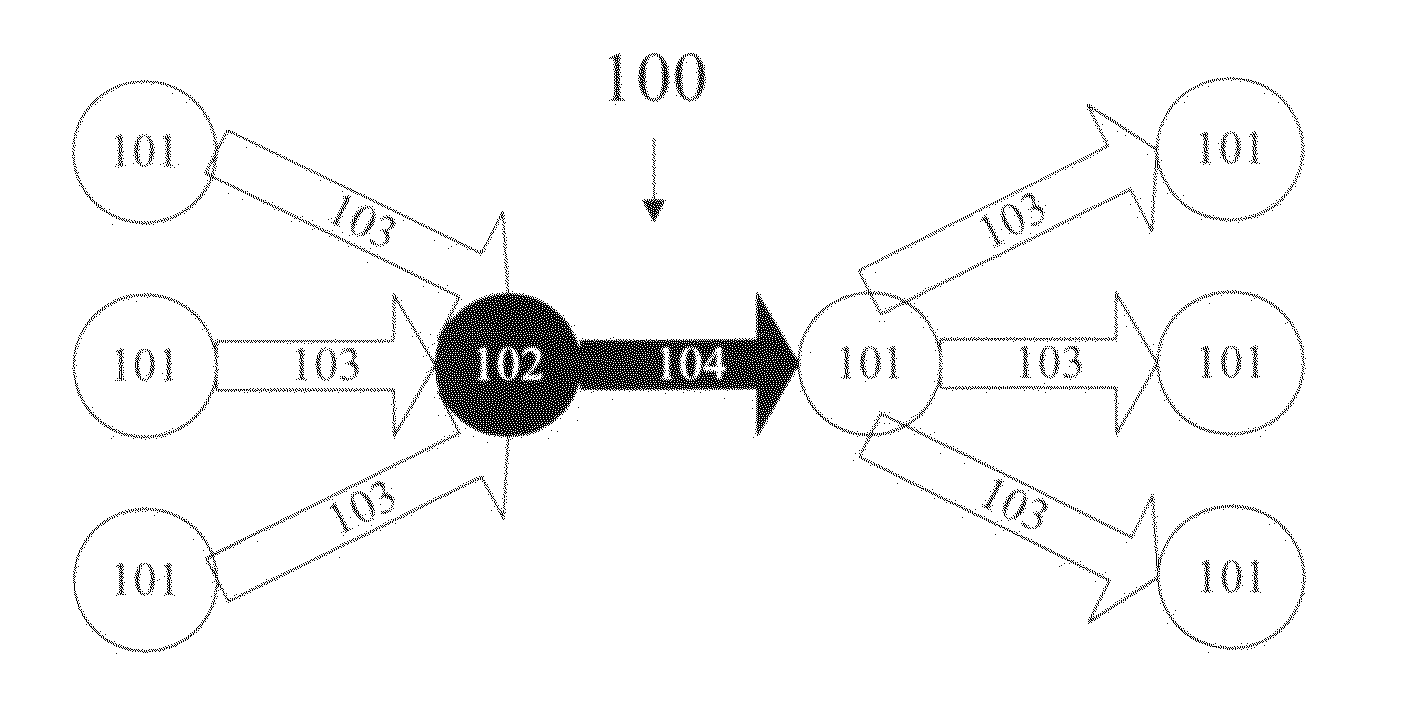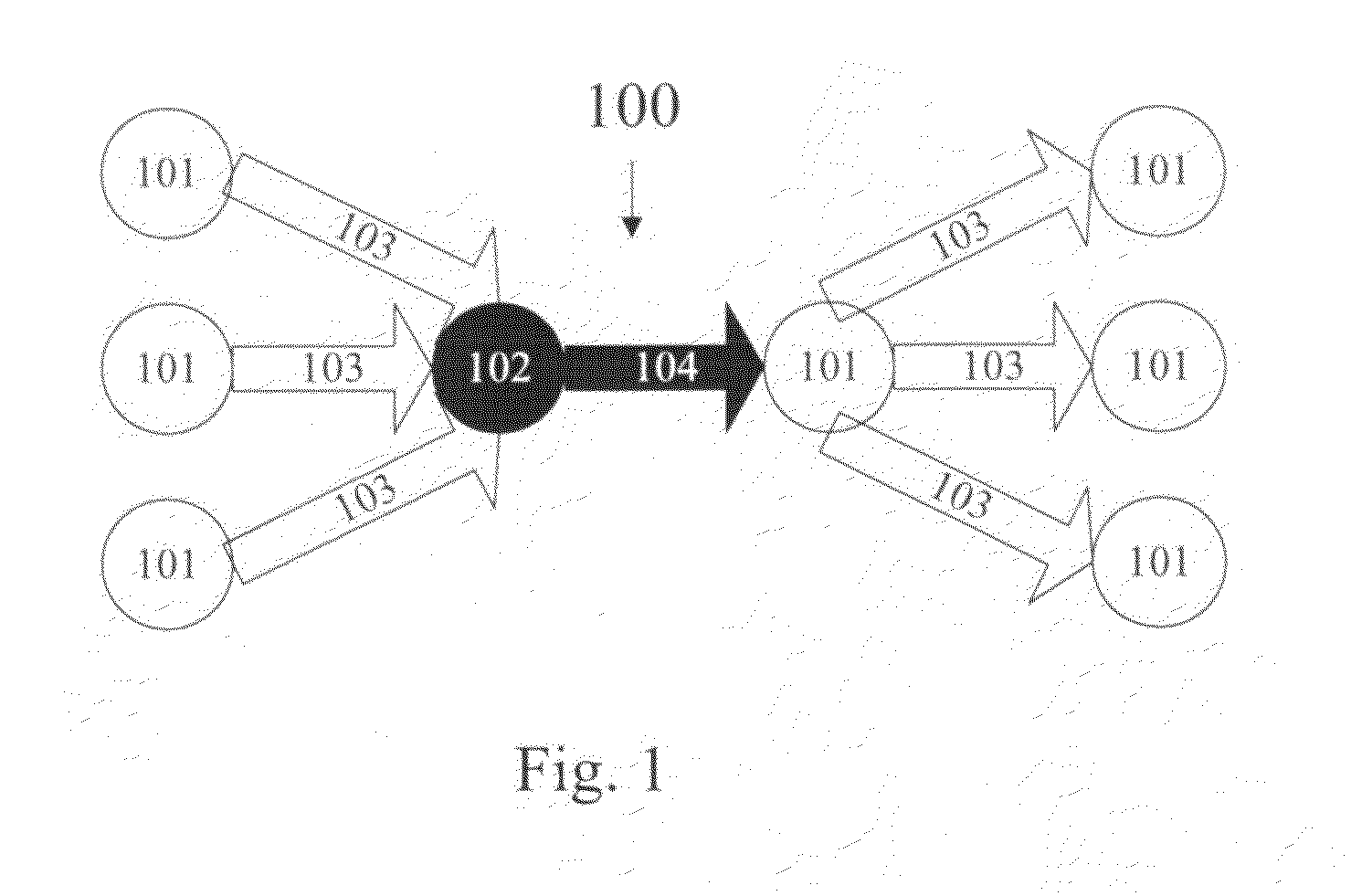System for congestion control in packet networks
a packet network and congestion control technology, applied in data switching networks, instruments, frequency-division multiplexes, etc., can solve problems such as speech reconstruction using variable rate encoders, achieve efficient implementation of qos enhancement techniques, maximize data received quality, and enhance service quality
- Summary
- Abstract
- Description
- Claims
- Application Information
AI Technical Summary
Benefits of technology
Problems solved by technology
Method used
Image
Examples
Embodiment Construction
[0023]Modern digital communication networks consist of sources (transmitters), destinations (receivers), and routers. Transmitters (or sources) generate packets and put them on the network. Receivers receive packets sent from transmitters and consume the packets by taking them off the network. Routers are intelligent systems which aid the packets in moving from transmitter to receiver and together with sources and destinations form the network. Packets can consist of multiple types of information. For this invention, packets which consist of variable data rate information will be considered. Specifically, variable data rate packets that contain an audio frame generated by a variable data rate voice encoder or multiple audio frames generated by a fixed length voice encoder but reordered in such a way as to mimic variable data rate frames. Each variable data rate audio frame consists of data of varying priority levels. Each multiple audio frame packet consists of data of varying prior...
PUM
 Login to View More
Login to View More Abstract
Description
Claims
Application Information
 Login to View More
Login to View More - R&D
- Intellectual Property
- Life Sciences
- Materials
- Tech Scout
- Unparalleled Data Quality
- Higher Quality Content
- 60% Fewer Hallucinations
Browse by: Latest US Patents, China's latest patents, Technical Efficacy Thesaurus, Application Domain, Technology Topic, Popular Technical Reports.
© 2025 PatSnap. All rights reserved.Legal|Privacy policy|Modern Slavery Act Transparency Statement|Sitemap|About US| Contact US: help@patsnap.com



